Complete List Of Gear
This section is for my own notes, but it’s online because there are lots of cycling geeks like myself who just love to read gear lists, as we search for the Best Version Ever of a specific thing.
Filter By Type
Filter By Trip

I have another cable as short as this one, but it doesn’t run at full 10Gbps speed and it doesn’t do power delivery so I can’t use it to charge big batteries. This cable does.

Sometimes you’re in the middle of nowhere and you want to play some old-skool 8-bit console game in an emulator.
This colorful gadget weighs very little, and I find it more fun to use than a keyboard.

This is how you pair your iPod Classic with your Airpods Pro.
Plug this little fellow into the iPod. Press the button until “SBC” flashes rapidly. Open the case of your Airpods Pro but don’t take them out. Wait a moment, then press the button on the back of the case and hold it. In a couple of seconds the “SBC” light will start flashing slower. If it doesn’t work the first time, press and hold the button on the Airpods Pro case again. At that point you can take the Airpods out of the case and use them. They are paired. Noise cancellation works as usual. To unpair, place them back in the case and shut the lid. In a short while this transmitter will shut off by itself.
This device don’t sound as good with the Airpods Pro as direct transmission from an Apple product with their proprietary audio chip inside (like the latest iPhones) but it sounds pretty dang good. And now your iPod Classic – which you’ve probably upgraded with SD cards so it holds 2 terabytes of stuff, or some other insane mod – can work with those fancy Airpods. WHOHOOO!!!
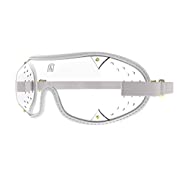
Sometimes the driving wind or rain will sting your eyes so much you can’t keep them open, but the cloud cover makes wearing sunglasses dangerous. That’s the situation these are for.
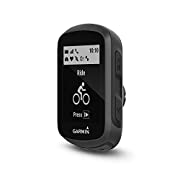
This is only a minor upgrade compared to the Edge 130, but hey, why mess with a good thing? It’s small, long-lasting, readable, and accurate enough. I could try and get my phone to constantly record a GPS track and report speed and time and distance, but the battery would drop like a rock. This does that job way better.
Long live the Edge 130 series!

I really wanted to like this gadget. I thought it would be cool to move up from the Edge 130 to something with more storage and a color screen.
Nope. The interface is an absolute train-wreck. It has SIX buttons all around it, irregularly placed by design, and it’s completely impossible to remember which button does what in each context. They have no spatial correlation with the interface, and no consistency. I found myself hating every second I had to interact with it. I hate it as much as I totally love the Edge 130, which is a lot indeed.
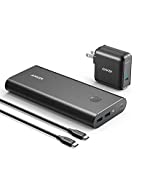
When you’re doing heavy software development and your computer is recompiling things in the background all the time, you can blow through a standard laptop battery in one hour. That’s no good if you want to go work out in the middle of nowhere.
This battery lets me work full-tilt, with all 4 cores maxed out and the brightness all the way up, for about four hours. With two of them I can put in an entire day of coding without needing to park next to a power socket. Takes a while to charge them in the evening, but, you can’t have everything…

In a pinch this makes an okay backless chair like the manufacturer says, but for me it’s a combination footstool and table. It’s part of my work setup: With my butt in the Alite Stonefly chair and my legs up on this stool, I can comfortably work in a park or on a hillside for hours.

This has one fewer USB ports than my older charger, but it’s a good amount lighter, which is an acceptable tradeoff. Like the older one it allows me to charge the laptop and my other doodads at the same time, from one outlet — which in turn means I need only one international plug adapter when I’m traveling.

I was very skeptical of these, because I find the non-“Pro” airpods worse than useless: They sound awful, and constantly fall out of my ears. I don’t know why anybody likes them. But the AirPods Pro are a different beast.
For years to come, I will remember that experience of walking outside the Apple store to a noisy intersection in Oakland, putting in the AirPods Pro, and then jamming that “Noise Cancellation: On” button for the first time. The whole world just dropped out of existence around me, like I had suddenly suffered some terrifying brain injury. “Oh my god I can’t hear,” my brain screamed. “What just happened?”
Since then I’ve done demos of them to friends of mine, telling them to put the AirPods in their ears while they’re in “transparent” mode. Then I start some music, and suddenly switch on the noise cancellation. Their jaws fall open. It’s unnaturally, frighteningly effective. You suddenly hear the music, and almost nothing else.
I now use these when I’m traveling on the wide shoulder of a busy highway. It cuts the thunderous rushing noise down to an acceptable level, and I can listen to an audiobook at a low volume instead of cranking it like I used to.
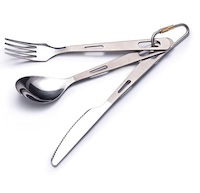
Okay, fine. I’m a middle-class twit and I bought my own personal knife and fork for travel purposes. Don’t hassle me about it or I’ll poke you!
What I like about this set is the polished ends. Makes them feel a bit nicer.
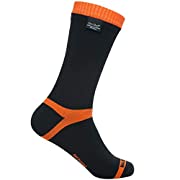
Bought these to add to my waterproof sock collection when the SealSkinz were discontinued. They work just as well. As I mentioned with the SealSkinz, waterproof socks on a recumbent are a fine idea because shoe covers don’t work, and with your feet elevated and facing into the wind they are a bit more likely to get cold. Wearing these with an additional pair of socks beneath was perfect for cycling in Iceland.
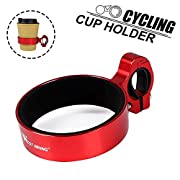
A cute idea. I keep it attached when the bike is in my hometown, and I’m riding my work commute or going to the farmers market. Practically speaking it’s only useful on really good roads, because the slightest bump tends to send your coffee splashing around. But I put my coffee in it anyway, with a lid on, because it’s just so indulgent and bohemian having my drink right there on the handlebars!
It’s lightweight enough to take on a tour but I haven’t bothered yet.
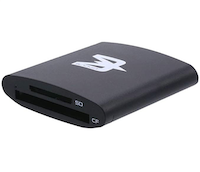
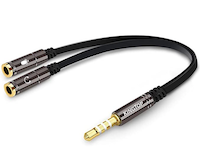
Unlike the FolioGadgets Y-adapter that I bought earlier, this one does not accidentally swap the left and right channels of stereo audio.
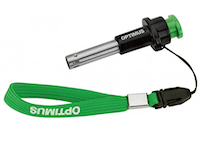
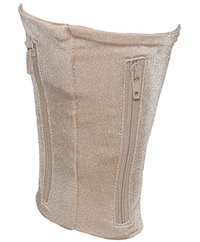
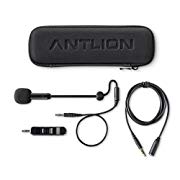
This thing comes with a couple tiny magnetic buttons that you can stick on stuff. When you want to use the microphone you hold it close to a button and it snaps into place. I glued one of the buttons to the adjustment clip on my helmet, and now when I want to talk to someone for a while I snap the microphone into position and wire it inline with my headphones. It seems strange that I would go for such a bulky solution, but it works so well it’s worth it. The microphone is uni-directional, and is held right up next to my mouth, facing it from about an inch away, and it stays out of my field of vision. It sounds perfectly clear even in high winds and with noisy traffic. I can talk in a conversational tone, sometimes so low that I can’t even hear my own words because of all the noise around me, and it comes through fine.
I attached the other magnetic button directly to my headphones so I can use it off the bike as well.

One pretty stupid flaw with it though: It swaps the left and right channels of your headphones. Durrr!
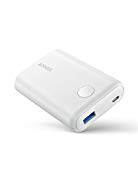
I’ll probably stick with this for a good while.
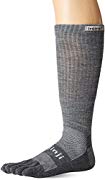
That makes these perfect even for sunny days, and on rainy days you can layer them in waterproof socks without making your feet too thick. The only issue is finding them in the right size. I had to order XL and they were still almost too small.
When you put the sock on, bunch it up and slide the whole thing partway over your foot, then stop and use both hands to individually pull each toe into place. Then pull the sock the rest of the way on. Can be done pretty quickly as long as you keep your toenails in order.
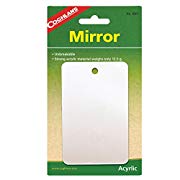
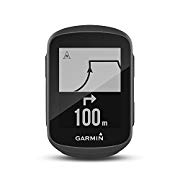
I was very skeptical of Garmin’s newer hardware and stuck with the 500 for a very long time, but this little thing finally obsoletes it. It’s the same always-on, long-lasting, easy to see, set-and-forget device I’m used to.
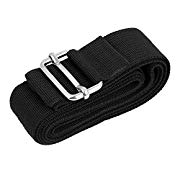
It took me a long time to find a luggage strap that was wider than 1-inch, didn’t stretch too much, didn’t use velcro which would wear out or suddenly tear open, wasn’t too long, wasn’t too thin, and didn’t come with a huge steel clip sewn into it. I bought a couple spares of course.

Works fine for charging and data transfer but they tend to get suspiciously hot after a while, which makes me think they’re wasting electricity. Apple sells a similar adapter directly that looks almost exactly the same but doesn’t get hot.
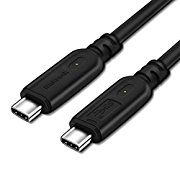

I’ve worn these through the rest of the spring rains and so far no leakage, but my confidence in gloves in general has been shaken. I don’t like the idea of needing to buy a new pair every year.

Then at the end of the day I drop myself down on a log and say, “what’s fer dinner Cooky?” And since Cooky is me, and dinner is noodles, I respond with “whatever you dang well like, as long as you like noodles.”
I don’t really need one of these. Neither do you. Just get a regular aluminum pot, or eat right out of the can, like a decent human being.
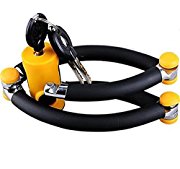
The documentation claims this lock is resistant to all hacksaws, all but the largest cantilevered bolt cutters, and even most hand-held hydraulic shears. So a theif would need a $2000 demolition tool to steal your bike. That’s an impressive set of claims, and I hope they’re never tested. Just looking at this thing is hopefully enough for criminals to move on to some other target.
I pass this little guy around the boom of my recumbent, between the seat and the headset (where the steering wheel connects), and lock it around a pole or part of a bike rack, and I’m good to go. No one is going to steal my bike unless they destroy it first.

Seems like a small thing, but after looking in a bag of cables for the hundredth time, you’re glad for it.
Sadly, the manufacturer has discontinued these very durable and reliable cables. The market is flooded with cheap braided ones now.
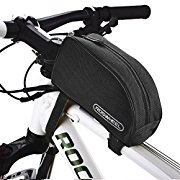

This is important for a recumbent because the frame doesn’t have any loops in it through which you can pass a heavy chain or cable, so you pretty much need to use a U-lock or the equivalent to securely anchor the frame. … And on a Giro 20, the front wheel is so far from the frame that you can’t pass a U-lock around both.
I thought about how much it would suck if I came out of a restaurant and found my front wheel missing – a 20-inch wheel with a generator hub, not easy to find or rebuild in even the biggest city – and I went online and bought these skewers.
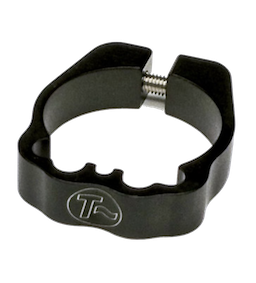

Then my bike got stolen. The old rack was so long out of production that no one knew where to get one. It didn’t help that most of them had broken in the years since production was stopped – it really wasn’t that sturdy of a rack.
I pined for the old rack for a few months, then moved on and bought one of these TerraCycle racks and clamped it in place on my new recumbent. At first I resented the extra weight of separate clamps. Then I read the specifications and learned that the rack could support 30 pounds of gear per side. That means I can put most of my heavy stuff down below the seat, far closer to the center of gravity, making the bike handle way easier.
The difference on the road was striking, and now I feel dumb for waiting so long to get a new rack.
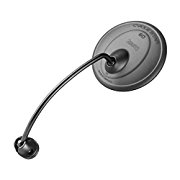
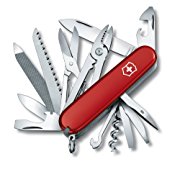
Things I wanted: The can opener, the scissors, the nail file, the tweezers, and the small and large knives. Things I didn’t want: The magnifying glass, the Philips screwdriver, the cigar cutter, a bunch of torx bits or hex sockets, a ballpoint pen, a flashlight LED, a digital alarm clock, a thermometer, a barometer, an altimiter, a ruler, a “parcel carrier”, … blah blah blah. The closest match I could find to the knife I got in 1990 was this.

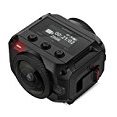
I only used it a few times, but the experience of editing down what I shot into a coherent video was totally painless. Garmin has improved the software massively. If I had known how easy it would be to edit these things in retrospect I think I would have taken a whole lot more videos.
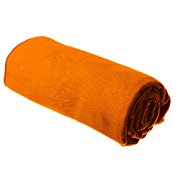
I’m a life-long Douglas Adams fan, so it’s a bit ironic that I’ve gone on several long journeys without taking a good towel. I bought this to correct that silly mistake. I also have a bit of a stink problem so an antimicrobial towel seemed like a good idea.
Unfortunately it hasn’t been that great on the road. The towel is alright for drying off, but not for wiping my greasy face or hands. The size was also overkill. I swapped it out for a regular cotton hand-towel.
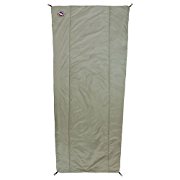
“Rookie mistake,” as my buddies in the army say. But it convinced me to make sure I never went through that on a real camping trip. So I added this liner to the inside of my bag, and as a bonus, I can now use the sleeping bag on warm summer days by leaving it unzipped and using the liner as a top sheet.
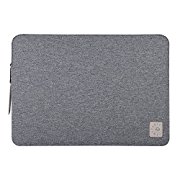
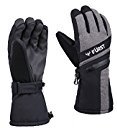
So far, these have stood up to rain in fairly high winds, and the battering of hail, with no intrusions. The pull-to-tighten system on the cuff works pretty well, and the touchscreen material works. The thumb is a little oddly shaped, but it’s not a big deal.
They come with a scratchy scarf that you’ll want to leave out on the curb after trying it on.
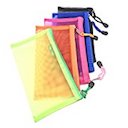
I use one of these for my important documents, another one for my audio cables and doodads, and another one for my tools (including pliers and a wrench). They’re sturdy and stuff doesn’t fall out.


Then I found these zippered pouches. They’re very lightweight but they have several layers of fabric, giving some protection to the items inside, and they’re shaped to hold bulky items. I dumped my power bricks and cords in the largest one, my portable speakers in the medium one, and gave the smallest one away. Problem solved.


And is it sharp? Yes it’s sharp. I was on a ship passing through the Panama Canal, and I took a shot of a sailor on a tanker ship passing through in the opposite direction, and when I cropped it down I could read his nametag.

It’s also the right size to hold all my little charging and data cables. Hooray!
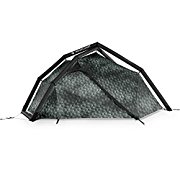
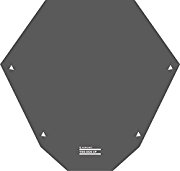
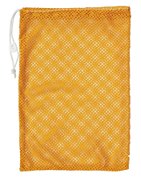
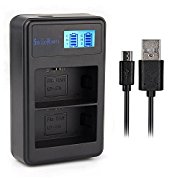
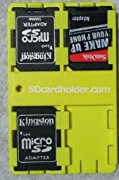
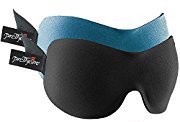

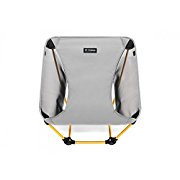
Another company called Alite made a “rocking chair” version of this design that you can scoot down and then lean back in, which adds the back support. That chair is great. Unfortunately Alite went out of business.
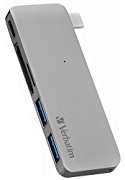
It’s solidly built, and works fine even after tumbling around in a bike bag for months. I can plug two USB devices into it and it will slowly charge them at the same time it charges the laptop. It gets warm after awhile, but doesn’t get blazing hot like some other hubs I’ve tried. Covers the bases pretty well. It’s a little too easy to unplug when you’re trying to swap cables around, but the solution to that is to just unplug the whole thing anyway and then swap cables.
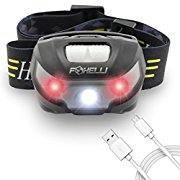
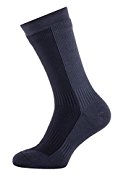
The solution is pretty simple: Waterproof socks. Wear them over your regular socks, and make sure they go up into your rain pants a ways. Your shoes will get wet and the water they retain will add weight, so try for shoes that are lightweight to begin with — or better yet, sandals, which you can wear even on cold days thanks to these socks.

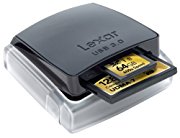
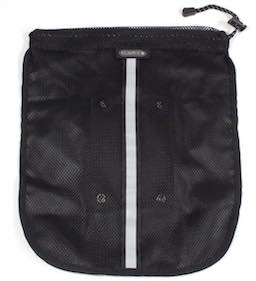
My rain coat and pants live permanently in one of these bags, and I use another to keep snacks in easy reach.
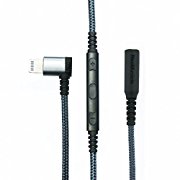
Also, when you riding your bike you want the equivalent of “hands free”, but anywhere you mount the phone is going to place the microphone too far away from your face, with wind rushing all around. So you need to bring the microphone to you.
Adapters like this have become a bit scarce recently – they’re all starting to have a male plug instead of a female one. This one is a decent alternative.

The Tubus Carrier Cargo rack I prefer doesn’t actually have the right mounting arms to connect to the seat struts of a Giro 20 recumbent. This one comes with excellent mounting arms, rubber spacers, braces that can go around the seat struts, and a big assortment of bolts and locknuts. Sometimes the price drops as low as 20 bucks, making it a steal. If you have a Giro, buy this rack and the Tubus, then give the remaining parts from both to a friend. The Tubus mounting arms are compatible with it, so your friend will have a usable rack.
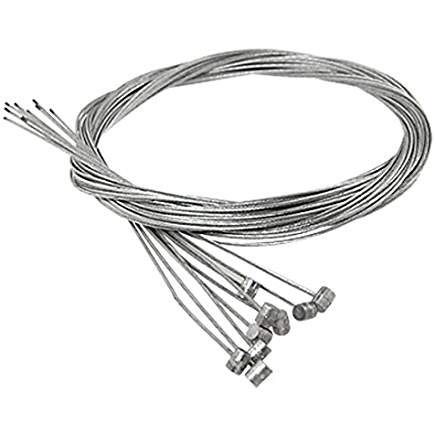
That’s when I learned that most brake cables aren’t long enough to reach from the handlebar of a recumbent all the way back to the mounting point for the rear brake. My project was halted for four days until this arrived in the mail.
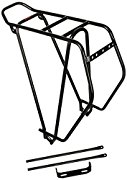
For more about racks, how I decided on this one, and how I mounted it, go here.

His decision was pretty smart: This lens is almost as good at the go-to lens for Canon users, the venerable 70-200 f/2.8 IS, but instead of weighing three pounds it weighs 1.5. Same zoom range, same image stabilizer, same clarity — and if you add a half-pound 2x zoom magnifier onto it, you keep all those features except now you’ve got 400mm of zoom on your hands. As long as you’ve got good light, you can reach right across a town square, a lake, a valley, and pick out some feature in the distance. Add a circular polarizer and a tripod mount and it still weighs less than the f2.8. Plus, it’s so light you can carry it around all day and it won’t tear your neck off.

After years or riding on the previous crankset I also decided that I wanted 170mm cranks instead of 175mm. The idea is this: One of your legs always goes out the same maximum distance away from you at the bottom of your pedal stroke. At the same time, your other leg is bent at the knee, at the top of the pedal stroke on the opposite side. The length of the crank arms determines how much your knee will be bent. I wanted my knee to be less bent, since I was relying on spinning the pedals faster rather than applying lots of torque. So I got shorter crank arms.
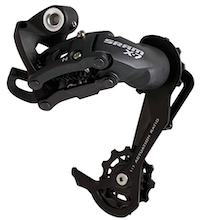
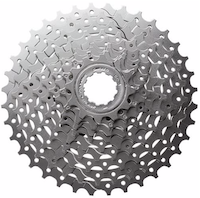
Unfortunately, Bacchetta has since moved away from the 9×3 drivetrain, and I am not aware of any good solution for getting such a low gear ratio with their current setup, except perhaps awkwadly retro-fitting an internally geared hub in the rear wheel, like all the fancy Surly Long-Haul Trucker riders do.
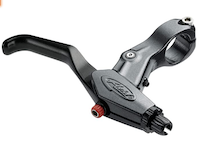
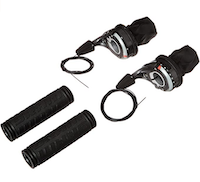
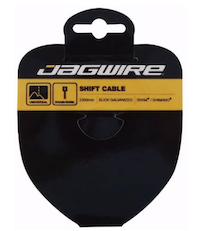
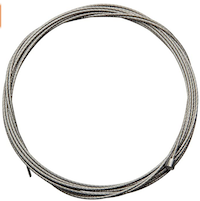
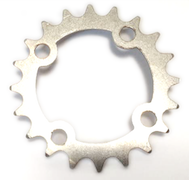
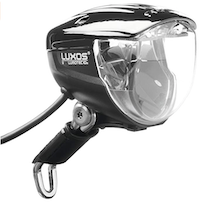
It has a feature that makes it automatically turn on when it senses darkness, which would be useful I suppose except it sometimes triggers during the day when you enter regions of shadow and then it doesn’t turn back off when the sunlight returns. It’s quite annoying to look down at the light and see the indicator for “on” and realize you’ve been wasting some of your energy over the last few hours powering a light you absolutely don’t need.
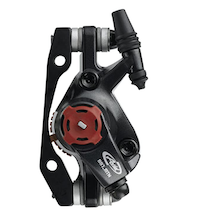
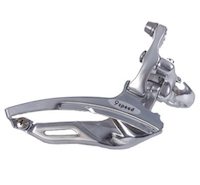
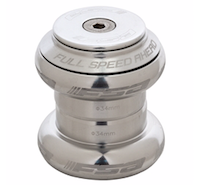
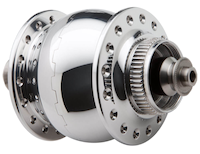
I’m using the SONdelux instead of the other SON types because I’m integrating it into a 20-inch wheel, rather than a 26-inch one. That means I need the model with relatively low rolling resistance, so I don’t waste energy generating extra power at low speeds.
The SONdelux does not have a six-hole variant for directly attaching to BB7-style disc brakes, so you need a little adapter that screws onto the side of this as well. Buy that, and a 20-inch rim, and this hub, and take all three to your local bike shop that knows how to build wheels, and tell them you want it built for strength rather than speed.
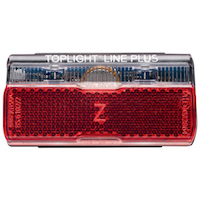

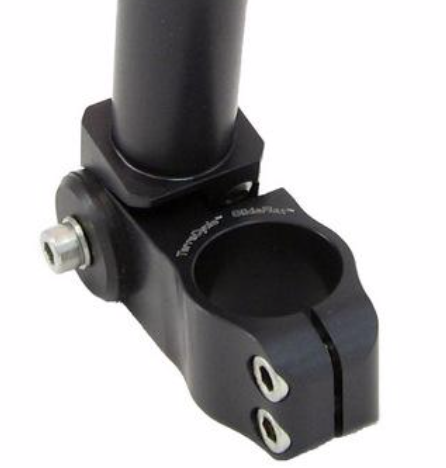

Plus it looks good when I’m walking around town off the bike, it’s well made, and it stands up to numerous washes. The only complaint I have is that it’s very expensive … But then again, so is almost everything in the world of bicycle gear.

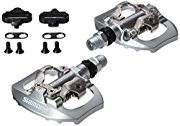
Like most SPD pedals, you can adjust the tension, so they grip your shoes strongly or lightly. My advice is to adjust the tension all the way to the lightest setting. When you’re on a recumbent you are not standing on the pedals, so the chance of accidental slippage is cut way, way down. At the same time, you want to be able to get your foot to the ground in a hurry, or even unclick one leg in order to swing it out for balance when you’re making a really tight turn.

Now my solution is to just connect the laptop directly to the camera, which has a USB3 slot and can provide read/write access to both card slots all by itself. The cards store an insane amount of data these days, so it’s not like I’m going to be swapping them around all the time.


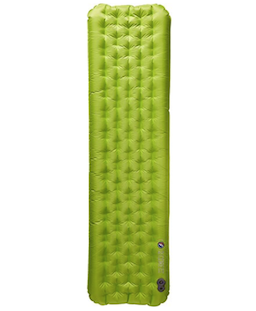
This pad lives in a pocket directly inside the sleeping bag, so I never slide off of it at night, and when I’m done with it I just roll up the sleeping bag and the pad rolls up along with it and goes into the same bag.
And also, this pad weighs a whole lot less than the mattress.



Turns out that a Retina Macbook uses the “USB PD 2.0” charging protocol to charge over USBC. Long story short, I bought this multi-charger, and it can charge a bunch of USB gadgets just like the old one and also charge a Retina Macbook at the full speed of 29 watts. Huzzah! More weight savings!


During the peak of iPod popularity I bet this case sold for something ridiculous like 35 bucks. The eight or nine it goes for nowadays is a more appropriate price.


The price on this item seems to have gone nuts! When I bought it, it was about $45.

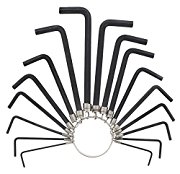
Twist off the wrench you need, use it for a while – short side or long side – then twist it back on. (Clockwise in both cases, so you match the winding of the spring.)
This particular keyring has a bunch of hex sizes on it that you don’t need, but it’s still cheap. Just peel off the extra ones and give them to your neighborhood electronics geek.
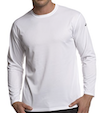
Only one downside: They’re 100% polyester, so they tend to skew the balance of bacteria on the surface of my skin, and at the end of the day I smell like a shower drain. Cotton or wool shirts don’t have this problem.

These adapters are not very practical, but they are really fun.
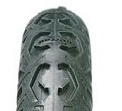

I bought this after wearing out an older leather version of the same saddle from 2001 or so.
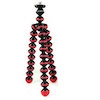
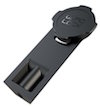

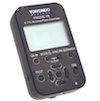

I used the adhesive part to make my iPod Classic mountable, and now I can swap between my iPod and my iPhone. Either one of them locks in place with a simple push-and-twist movement, and is easy to remove with one hand, even while wearing gloves. When it’s in place, even the nastiest bumps in the road cannot dislodge it.
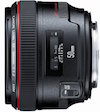
I was worried that I would miss the ability to zoom, but in practice that’s only come up when I’ve tried to get unobtrusive shots of wildlife or people, or when I’ve been stuck inside a vehicle of some kind. For those situations I bought an f/4 zoom lens, which works wonderfully during the day, but when it gets dark I switch back to this. I set the aperture at f/2, crank the “low shutter speed versus high ISO” balance setting a few notches towards “high ISO”, and snap away.
The f/4 zoom lens is stabilized and this one isn’t, but this one still just demolishes the f/4 in low light. I can walk into a dimly lit room, raise the camera, and take a 1/20th-second exposure that looks like I used a 700 dollar lighting kit and spent half an hour setting it up.

Read the review here.
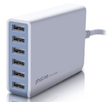
With this, we only need to find one power socket and carry one international adapter, and we can cluster everything in one place on a desk, and leave every other USB charger at home. So far it’s been worth it.

In the whole New Zealand trip, there were only six situations where Kerry and I had to use this lock, since the rest of the time we had the bikes stashed in a hotel room … but each of those six times, it was a huge convenience and justified the extra weight of carrying a lock.
After I got home I purchased a second one and kept it in the parking garage at work.

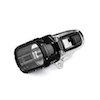
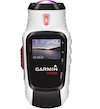
Amazingly enough, it did what I wanted. I was able to get pretty good-looking time-lapse video, and if I’d had time to tinker with the mounting system and my software I could have done something crazy like record the entire trip and turn the whole thing into one super-speed 15-minute video. The underwater footage turned out okay, and again with more time I could have had it looking great. Overall I’m pretty satisfied with this device, except I wish it was lighter, and that the accompanying iPhone app had more features.
That said, this device is also pretty redundant. I should probably not have purcahsed it, since my iPhone takes perfectly acceptable time-lapse videos. Now if only there was a good way to mount an iPhone on the masthead of a recumbent…

Nevertheless, if you are traveling in a first-world country with relatively few hills and you don’t plan to do any off-roading, this tire is overkill. I took the Primo Comet 100psi tires all the way across the US and only had two flats, and those flats were a decent price to pay for less rolling resistance on those featureless midwestern highways. I wish I could recommend one tire for all touring situations but instead I’ll recommend these Marathon Mondials for rough or remote country – where a mangled tire could ruin your trip – and the Primo Comets for everything else.



Read the review here.

So is this item worth carrying around? For a short solo international trip, I’d say yes. For more than one person, you’re better off getting one dedicated multi-port high-wattage charger, so you can charge your spare batteries, helmet intercoms, speakers, lights, and phones all at the same time.

In retrospect this battery was overkill, and we could have gone with something about 2/3 of the size and never worried. Now my sister uses it to charge her youngest son’s power-hungry iPad 3 on car trips.

So far in two years I’ve only used it once, to conceal a car key inside a wetsuit. My paranoia probably got the better of me when I purchased this.

So far it’s been an excellent choice, as extra cycling luggage and as a regular hiking backpack. When placed on top of a long rack, the top pocket and side pockets are easily accessible under two crossed bungee cords.

It doesn’t have an attached hood, which is a positive thing for a recumbent rider – you either want the hood on, or absent, not hanging down your neck squished against the seat. On rainy days I use this with a waterproof hood that wraps around the collar, and on windy days I use this without the hood.
After two years of use it has stood up perfectly, except I’ve learned over time that any “waterproof” zipper on a jacket is not really waterproof when you’re riding in torrential rain leaned back on a recumbent seat. So you’d better keep your electronic devices in a plastic bag or some other additional layer.
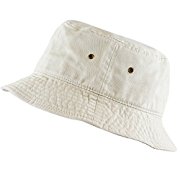




On a cross-town trip, some people wear their bike chain over their shoulder or around their waist while they’re riding, but this chain is just too heavy for that. It’s also way too heavy for touring, and not appropriate anyway because the bigger problem while you’re touring is thieves who will loot your bike in-place, taking your luggage. But if you wanna park a bike in Oakland and come back for it later, this is what you put on it. (And if you’re really worried, you remove your seat and take it with you.)
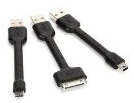
Of course, nowadays the socket for iPhones and iPads has changed, so you’re better off getting something else.

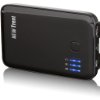
Over many days of riding, I have never needed any more capacity than this 5000mAh battery pack in a single day. On my ride from Colorado to Ohio I put in one 18-hour day of riding, and used it to charge the iPhone twice and an iPod once. (Love those audiobooks!)


Finding a pair of rain pants that fit me was a chore. I was also dismayed to realize how expensive rain pants are in general. … But once I actually put them on and rode through a rainstorm, I was glad I’d spent the money. The velcro-and-zipper apparatus at the base of each leg is a great design. It helps you seal the pants tightly over your other protective layers, and it helps you rearrange those layers when they inevitably bunch up around your groin after pulling the rain pants up for the first time. Yikes!
These particular pants have a zippered pocket directly on the back, which is handy for riding on an upright bike, but worthless on a recumbent. No great loss, since actually using it means you stick your hand directly behind you in a way that makes you look like a zoo animal picking its butt.

This cage solves the problem by gripping bottles with curved blades of carbon fiber. The grip is quite strong even when the bottle isn’t seated all the way into the cage. So, I can slap a large water bottle into it while cycling along, and it won’t fall out.



My only worry with this machine was that I would end up in a motel room that offered an ethernet jack but no wireless internet. So far, in all my travels, I have not been in this situation. (There’s a USB-to-Ethernet dongle available, but I don’t use it.)

Incidentally, the FastBack NorBack Frame Bag has a velcro arm inside it that fits this pump perfectly.
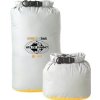
I use one of these to store my sleeping bag (the larger one) and the other one to store all my laundry. They do their job well. No complaints.
You might ask – why not just skip the bags, and use waterproof panniers instead? Well, sometimes it’s nice just to organize things by putting them in separate bags. And, these bags can be rolled up and then squished to drive out all the air, making their contents take up a lot less space. A wad of laundry the size of a watermelon can be become a chunk the size of a cantaloupe instead.
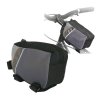

Read the review here.

These gloves are cheap – 3 bucks a pair – and they weigh almost nothing. They protect my hands when cycling and hiking, from heat and cold and dehydration. When it’s extremely hot out, I just get them wet. When it’s extremely cold, I stick them inside larger gloves. They protect my hands from sharp rocks when I’m splashing about in a river. I can make very messy repairs with them, and then just throw them away.
Two days out in blazing sun, and your bare hands will turn red and start to sting. Two months out in the sun with these, and you will end up with a pleasant, even tan.
Work gloves like these – slightly sturdier versions of a glove liner, essentially – are typically sold in bulk, ten pairs at a time. Grab a bunch.

Here’s the one thing: The Garmin product management department, in a spasm of divine inspiration, decided to remove a feature from the 500 that was present in the 305, in order to encourage an up-sell to the Edge 800: The automap. On the 305, you can press a few buttons and get a line showing where you’ve been since you last turned on the device. If you’re riding around an unfamiliar area, that feature can be a godsend, because it will show you exactly what direction you’re headed, and can help you retrace your steps. For some reason, they ripped all auto-mapping out. Either you run a pre-loaded course, or you have no map. Lame.
That gripe aside, it’s a lovely device. I use it as a kind of pinch-hitter for the iPhone, because if I was to use the iPhone as a primary GPS tracker with an always-on display, the battery would be toast.
Here’s what the Edge 500 gives me: Constant, set-and-forget recording of my location, for the entire day. A trip-timer telling me how long I’ve been on the bike. My speed, in bright readable numbers, all the time, at-a-glance. How far I’ve traveled for the day. And, as a bonus, a rough estimate of the altitude, and of the ambient temperature. I do not need to poke any buttons to read these things, they’re just there.
Plus, the device synchronizes quickly with standalone software like Ascent or Rubitrack, charges rapidly, and has an impressively secure twist-mount for my handlebars.
And, the battery life is outstanding. I have turned this thing on in the morning, taken it 80 miles on a bicycle, then gone to bed without remembering to turn it off, and found it still gleefully tracking away when I got up in the morning, with the timer at 18+ hours. U JELLY?

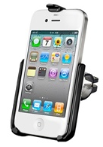
Once when I was riding through East Oakland, a guy came running up alongside me and tried to yank the phone off my bike. To his surprise, the mount didn’t budge. I slammed on the brakes, cussed him out, and then rode angrily away. East Oakland is crazy.
(… And West Oakland is worse. If you’re going to ride around with a fancy phone in West Oakland, either put it in your pocket, or don’t slow down for anything. But I digress.)
RAM Mounts went on to make a mount for the iPhone 5 that didn’t perform as well – the plastic tab at the top had a tendency to snap off after heavy use – and when the iPhone 6 came out they decided not to make a custom-shaped mount at all. I moved on to a mount made by Quad Lock.

Suppose you’re biking at night, on a route you’ve never taken, and the road loses shape and changes to dirt. The phone is right there on your handlebars, so you press a few buttons, and instantly you get a daytime satellite photograph of the entire woods. There in the center is a glowing dot, showing where you are. As you ride on, you can glance down at the dot and confirm that, yes, there’s the tree you should be seeing, and there’s the spot where the road bends,… et cetera. In addition, the phone is playing music for you. And checking your email. And if the woods are getting spooky, you can call someone up and ask them to tell you jokes.
All with one lightweight device. Frankly, it’s like having “cheat mode” for a bicycle. It turns your bike into a mobile command center. With a few bars of signal, I am just as connected to the digital world and my social network as I am when sitting at home.
On my ride across Oregon, I used it to look at satellite pictures of the roads ahead, to make sure I wasn’t going to end up on dirt or gravel. In Indiana, I used it to check the evolving weather forecast so I knew when to switch to rain gear. In Kansas, I used it to search for the next motel I would be staying at. I could get directions, read a review, look at the place in “street view” to make sure it wasn’t decrepit, then call them up and make a reservation, all without dropping below 15 miles an hour.
In the ensuing years I’ve upgraded to other phones – all iPhones so far – and they’ve only become more useful and more fun.
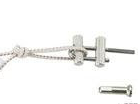
Instead I got my pliers out and bent the spoke to one side, then set up this gadget and tightened it down. The wheel went back towards straight, and I was able to finish the remaining four days of my ride on it.
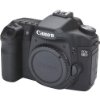
The build quality of the 50D has been outstanding, and the image quality has been excellent. After five years of pretty rough use I’m still enjoying it, though that’s more likely due to the lens than the camera itself. The Sony Alpha SLT-A99V tempted me as an expensive upgrade for a while, but Sony just doesn’t have the same offering of lenses. My next move will probably be the Canon EOS 6D.

The price may seen crazy, but look at it this way: To find a superior lens (at least here in 2012), you’d have to start by doubling that price.
Incidentally, if gathering lots of light is your game, then you might want to try the Canon EF 85mm f1.2L II. Another tempting upgrade … if my money supply was infinite, which it ain’t!!



Of course I still end up having to swap things around on some nights, since I can also use the hub to charge my iPod, my iPad, my Countour video camera, and my rainproof flashlight. Usually those items stay home, though.
Since this item is discontinued, try this instead.
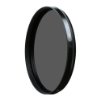
Plus there’s the indended advantage: It brings the intensity of the sky down to the intensity of the terrain, keeping it from washing out, and it helps reduce pesky reflections on water and other surfaces.

This particular rack isn’t made any more. Its successor is just as strong, but doesn’t have the upward curve that acts as a handle. Damn.

Three drawbacks: The rack is rather heavy, harder than usual to remove, and doesn’t pack into a shipping box very well. When I removed it for shipping to Australia, it wouldn’t fit in my Crateworks box, because it was too wide to fit on either side of the dividing compartment. So I left it behind.
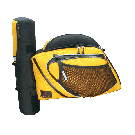
Waterproof material hasn’t mattered as much as I thought it would. There were a few times in Missouri where it rained heavily and they got soaked, but all my luggage was packed inside in waterproof bags. The weight of the water being held in the fabric was probably a drag on my pedals, but I didn’t notice it. The next day I emptied the panniers onto the motel room floor and hung them from my handlebars next to the space heater, and they were dry before I left.
True, I could pay $350 and get the large waterproof Ortlieb bags, and stop worrying about rain. But then I would be giving a few things up.
For one, the Arkels are flush with the top of the rack, making it easier for me to stack large things – such as an oversize backpack and a sleeping bag – on top. The bags also unzip along the side, and have several side pockets and pouches, so I can get anything I need from them without disturbing the items above. They also anchor to the rack very securely. Any bump that could dislodge them would probably break the rack itself. They take maybe two additional seconds per bag to attach or remove compared to the Ortliebs, and that time is completely inconsequential.
And most important, these bags actually fit on my rack. The Ortliebs are designed to fit on the elongated racks that ship with some – but not all – recumbents. They do not fit on mine.
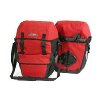
The mounting system is very simple, and the external pockets are theoretically handy but I almost never use them. Sometimes I find items I’d put in there months ago and forgotten about, like food wrappers or gloves. The drawstrings and flaps are very quick to close, and I can open them with one hand while stopped at a stoplight. The interior of the main compartment is sensibly divided by a tongue of fabric that keeps flat things snug against the frame, which works well for transporting a binder or a laptop. There’s also a zippered mesh compartment inside for small things. With a little practice I discovered I could reach under the flap, undo the zipper, get an object, and re-zip the compartment all with one hand, without looking.
I use these bags for almost every excursion, recumbent or upright bike, across town to the store or across state lines. To get them to fail I’d probably have to light them on fire. (I once carried a full-size truck battery home from the hardware store. The bike leaned a lot but the bag was fine.) My only concern with them is kind of esoteric: When I’m riding in a large anonymous crowd, like San Jose Bike Party, I sometimes worry that the bags are too easy to remove. A stranger just behind me can reach out any time and yank on the handle, and then disappear into the crowd before I realize what’s happened. To deal with this paranoia I anchor the spine of each bag onto my rack with a large ziptie before I go riding into slow-moving group events.
Let me say this again, though, to give it due emphasis: I have used these bags almost every single day for over six years now, and they are just as sturdy as they were when I bought them. Not a single loose thread, torn seam, or broken clip. That is remarkable. They are worth every penny.


It’s designed to enclose (among other things) a bicycle pump, but I decided to mount the bicycle pump elsewhere. Usually it contains: Chain oil, a tiny set of needle-nose pliers, a tiny adjustable wrench, a set of hex keys on a keyring, a bag of nuts and bolts, some brake pads, zipties, and a swiss-army knife with scissors, bottle opener, and screwdriver.

This particular bag isn’t made any more, but FastBack has a couple of newer models like it.
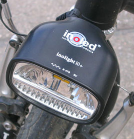
There are other lights available that generate a longer channel of illumination in front of the bike, but they also draw more power from the dynamo, adding to the drag the dynamo creates. After a few months of riding with a dynamo light, I discovered I was able to sense that drag at high speeds. From this I realized that there is a price to be paid – in calories and effort – for extra light. The urge to upgrade to something brighter passed rapidly. That said, slightly more efficient LEDs come out every year, and in 2017 I switched to a B&M Lumotec Luxos U when I built another bike.
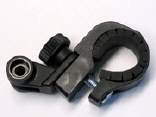
I used one of these on each bike – upright and recumbent – to position the Inolight. Very handy.
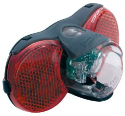
About four years after buying it, I accidentally knocked the back plate off against a rock while I had the bike upside-down. It snapped back in place with no trouble, but the fit wasn’t as secure, so I ran a ziptie around it to grip the front and back together. Now I’m on year 7, and it’s still doing fine. Busch & Müller have earned their money for sure.
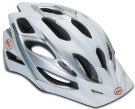
Just another bike helmet. In the summer I find I have to ride with a bandanna on underneath the helmet, to keep the sun from shining straight through the holes and toasting my forehead.
When using a recumbent, the upright posture encourages you to face forward instead of down, and the visor on the end of the helmet stops being effective. There’s a product called “Da Brim” that you can use to address this.
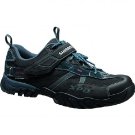
You can use shoes like these for casual days – walking around the store, or getting between your bike and your desk at work – but you wouldn’t want to use them on an all-day hike. I like them because I don’t necessarily have to change out of them when I’m not riding. That makes them ideal for long trips when I’m on the bike most of time, but might stop any minute to walk into the woods, climb a hill, or use a scummy bathroom.

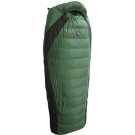
Of course I’ve also used it inside a tent, on an inflatable mattress, and it’s great there too. Long underwear and a t-shirt keeps me from sweating in the synthetic lining.



There are people out there who believe that any kickstand is a luxury, and choose instead to save valuable weight by removing theirs, or never installing one in the first place. What can I say … I use this thing an average of six times with every ride I make, local or long-range. I love it. Since it holds the bicycle straight up, I can put a lot more weight in the saddlebags without worrying that it will tip over. For fine-tuning the weight of unevenly packed bags or a slope in the road, I just turn the handlebars left or right after parking.
Typically, you install this thing by loosely attaching it, then marking how far down you want the legs of the kickstand to reach. Then you detach it again and saw off the excess material with a metal saw. You can do it in an hour or so.



I’ve read a few gripes in forums about how one should only use light grade oil and nothing else, applied often, to avoid drag. I’ve also met a couple of mountain bikers who used straight-up axle grease on their chains, applying it liberally with a stick before barreling down muddy hillsides, then wiping it off at the end of the day. Do whatcha want, yo. No judgement from me!
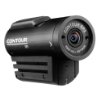
The first is, it takes for-ev-er to boot up and acquire a GPS lock. Like, somewhere above two minutes even in open country. That’s unacceptable.
The second: It’s surprisingly difficult to mount. I’ve tried various angles on the bicycle, and they all cause too much vibration. I bought a mount for my helmet, but it holds the camera in a kung-fu grip that requires five years of training in a dojo to defeat. Plus I have to turn the lens slightly off the horizontal to correct for the incline of the mount, and if I get it wrong, everything I film comes out leaning to one side.
Third: The viewing angle is either too narrow or too wide, and the media files it generates are enormous. To get video in my specifications, I have to post-process the recordings, cropping 15% off the sides and cutting the resolution by 1/3.
I wrote an AppleScript to automate the process, but transcoding into h264 is no joke. My 2011 MacBook Air would grind away for 15 minutes on a 5 minute clip. You can forget about doing this “in the field”; your laptop battery would be dead in an hour.
Which brings me to complaint number four: The battery life. One of the big features that attracted me to this camera was that I could clip it to my helmet and set it in “picture mode”, which takes an endless series of decent resolution photos of whatever I’m looking at, one every 5 seconds or so. The idea is, I can ride out on the road and just look at something for five seconds, and then note the time, and at the end of the day I’ll have a picture of whatever I was looking at, ready for posting and commentary, and I never even had to take my hands off the handlebars or fumble for a camera.
But no. Even in what you would expect is a very low-power mode, the battery dies after only a couple of hours. So much for all-day riding.
Alas, I now leave this device at home on a shelf. Even the newer 2012 model does not adequately address these flaws.

I bought it because I was curious, and because it was cheap. (Free shipping.) I would be delighted if the company enhanced their firmware and software so that I could send a stream of Contour photos to my phone, and upload them automatically to a gallery website as I rode along. Real-time hands-free photoblogging! Kickass!
The power requirements of bluetooth make this unlikely, though…
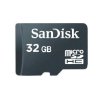


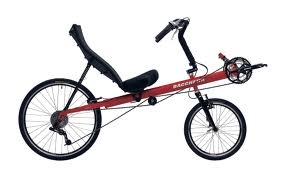
I’ve found the Bacchetta Giro 20 to be an agile, hard-working, and extremely comfortable ride. I’ve taken it 130 miles in a single day and gone to bed with zero joint pain – not in my knees, not in my tailbone, not in my neck or wrists.
The Giro 20 is a good balance between the low-profile rides of the more streamlined racing recumbents, and the forward-facing, upright rides offered by long-wheelbase recumbents. I have been tempted to move away from the Giro to the HP Velotechnik Street Machine, since the Street Machine has a nice integrated suspension, but that led me to the other great thing about the Giro: The pricetag. A Street Machine specced out to my requirements would have cost me twice as much as the Giro.
I’ve spent a lot of money on small degrees of improvement, in biking gear, computer gear, audio gear, camera gear … but that was too much, even for me. I’m quite happy with the Giro 20 and it’s probably good for another ten thousand miles.
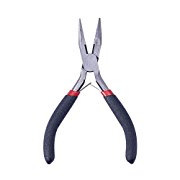
Almost all the time I don’t need them and they sit ignored in the gear bag. Then suddenly I’m in the middle of nowhere and I use them to do something that takes only a few seconds — but would take 20 minutes, or be impossible, or dangerous, without them.

